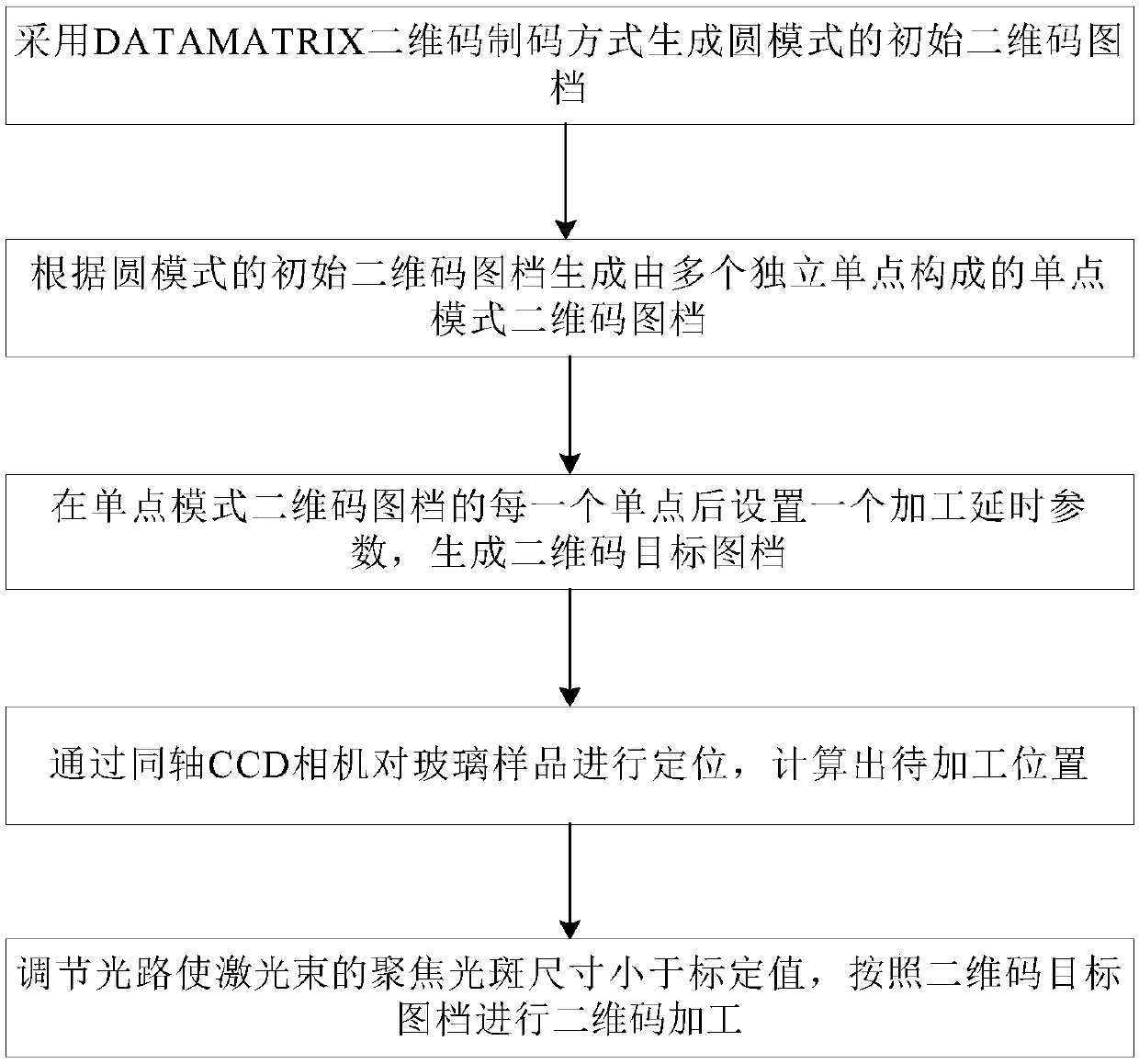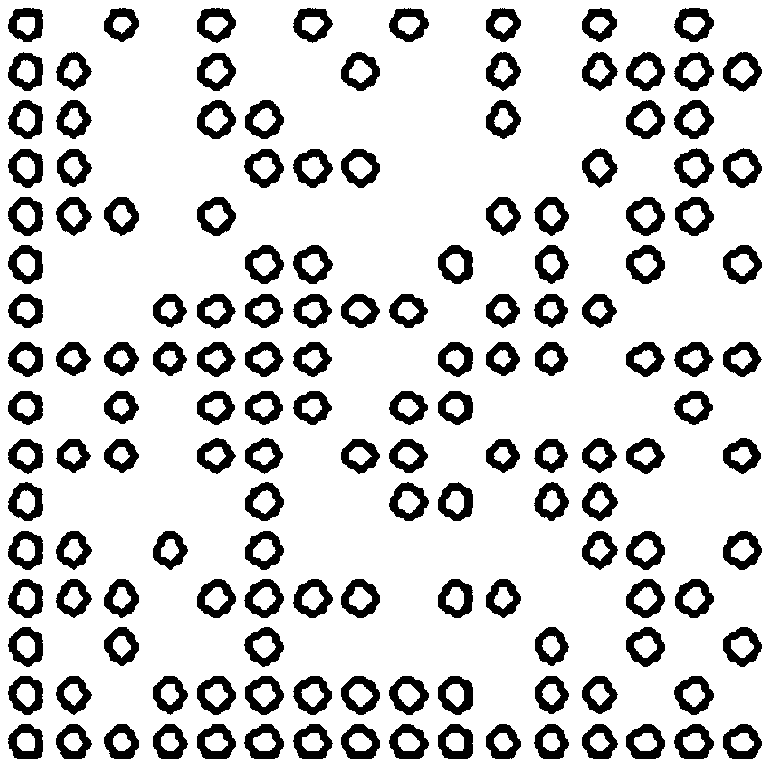Method for engraving miniature two-dimensional code in glass laser
A glass laser, two-dimensional code technology
- Summary
- Abstract
- Description
- Claims
- Application Information
AI Technical Summary
Problems solved by technology
Method used
Image
Examples
Embodiment Construction
[0030] The present invention will be further described in detail below in conjunction with the accompanying drawings and specific embodiments to facilitate a clear understanding of the present invention, but they do not limit the present invention.
[0031] Such as figure 1 As shown, a method for engraving a miniature two-dimensional code in glass laser comprises the following steps:
[0032] Step 1: Use the DATAMATRIX two-dimensional code system to generate the initial two-dimensional code image file of the circle pattern. Such as figure 2 As shown, the initial two-dimensional code image file of the circle mode is a whole generated by the software Ezcad through the DATAMATRIX two-dimensional code coding method. Its size is 0.10*0.10mm and contains no less than 20 characters (such as 12345678900123456789).
[0033] Step 2: Generate a single-point pattern two-dimensional code image file composed of multiple independent single points according to the initial two-dimensional c...
PUM
| Property | Measurement | Unit |
|---|---|---|
| size | aaaaa | aaaaa |
| diameter | aaaaa | aaaaa |
| Circularity | aaaaa | aaaaa |
Abstract
Description
Claims
Application Information
 Login to View More
Login to View More - R&D
- Intellectual Property
- Life Sciences
- Materials
- Tech Scout
- Unparalleled Data Quality
- Higher Quality Content
- 60% Fewer Hallucinations
Browse by: Latest US Patents, China's latest patents, Technical Efficacy Thesaurus, Application Domain, Technology Topic, Popular Technical Reports.
© 2025 PatSnap. All rights reserved.Legal|Privacy policy|Modern Slavery Act Transparency Statement|Sitemap|About US| Contact US: help@patsnap.com



